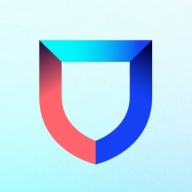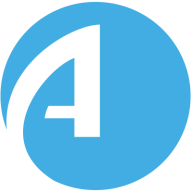


Lacework FortiCNAPP and Prevasio are both cloud security solutions competing in the area of cloud security management. Lacework FortiCNAPP appears to have an edge due to its ease of use and strong anomaly detection capabilities, while Prevasio is recognized for its comprehensive threat analysis.
Features: Lacework FortiCNAPP offers real-time anomaly detection, built-in compliance reporting, and effective alert prioritization. Prevasio provides detailed anomaly detection, focus on attack path identification, and continuous monitoring across hybrid deployments.
Room for Improvement: Lacework FortiCNAPP users desire better data governance and enhancements in third-party application integrations, as well as improved IAM security controls. Prevasio could improve its user interface and integration capabilities, which would simplify deployment and amplify features.
Ease of Deployment and Customer Service: Lacework FortiCNAPP is mainly deployed in public cloud environments, with technical support noted for its responsiveness. Prevasio, designed for hybrid cloud settings, offers sufficient support during integration but receives mixed reviews on responsiveness.
Pricing and ROI: Lacework FortiCNAPP pricing is seen as fair but slightly high for larger environments, with users noting a strong ROI due to reduced manual monitoring. Prevasio's pricing is deemed competitive but high in some markets, with ROI attributed to potential cost avoidance from security lapses.



SentinelOne Singularity Cloud Security offers a streamlined approach to cloud security with intuitive operation and strong integration capabilities for heightened threat detection and remediation efficiency.
Singularity Cloud Security stands out for its real-time detection and response, effectively minimizing detection and remediation timelines. Its automated remediation integrates smoothly with third-party tools enhancing operational efficiency. The comprehensive console ensures visibility and support for forensic investigations. Seamless platform integration and robust support for innovation are notable advantages. Areas for development include improved search functionality, affordability, better firewall capabilities for remote users, stable agents, comprehensive reporting, and efficient third-party integrations. Clarity in the interface, responsive support, and real-time alerting need enhancement, with a call for more automation and customization. Better scalability and cost-effective integration without compromising capabilities are desired.
What are SentinelOne Singularity Cloud Security's standout features?SentinelOne Singularity Cloud Security is deployed in industries needing robust cloud security posture management, endpoint protection, and threat hunting. Utilized frequently across AWS and Azure, it assists in monitoring, threat detection, and maintaining compliance in diverse environments while providing real-time alerts and recommendations for proactive threat management.
Lacework FortiCNAPP provides robust cloud security, combining vulnerability management and multi-cloud insight with user-friendly controls, machine learning detection, and compliance support.
Lacework FortiCNAPP specializes in cloud security by merging machine learning anomaly detection with agent-based vulnerability management to offer detailed alerts and compliance reports. Its comprehensive approach allows continuous monitoring across AWS and Kubernetes, providing insights from an attacker's perspective. The platform offers automation and seamless Slack integration, facilitating collaborative and efficient cloud security management. Users value its ability to handle multi-cloud environments and scan IAC scripts, configurations, and compute nodes across AWS and GCP.
What are the key features?Organizations across sectors leverage Lacework FortiCNAPP for cloud security, focusing on compliance, security posture, and vulnerability management. It is widely used for monitoring AWS and Kubernetes environments, scanning IAC scripts, configurations, and securing compute nodes. It supports multi-cloud security posture management and log ingestion, enabling companies to maintain strong cloud infrastructures without dedicated security layers.
Prevasio is an agentless cloud-native application protection platform (CNAPP) that provides increased visibility into security and compliance gaps, enabling cloud operations and security teams to prioritize risks and ensure compliance with internet security benchmarks.
Prevasio combines cloud-native security with SRI International's proprietary AI capabilities and AlgoSec’s expertise in securing 1,800 of the world’s most complex organizations.
We monitor all Cloud-Native Application Protection Platforms (CNAPP) reviews to prevent fraudulent reviews and keep review quality high. We do not post reviews by company employees or direct competitors. We validate each review for authenticity via cross-reference with LinkedIn, and personal follow-up with the reviewer when necessary.